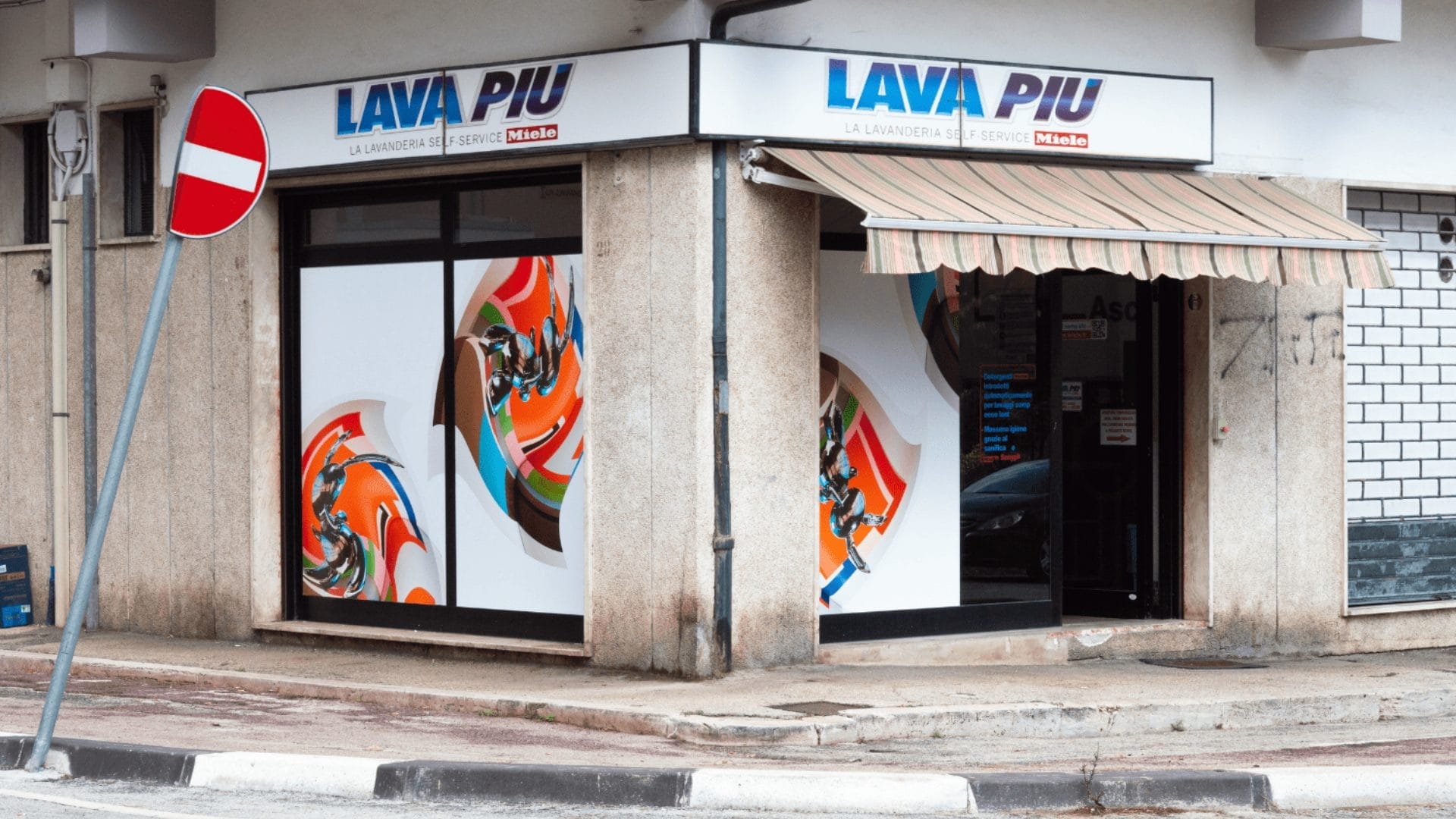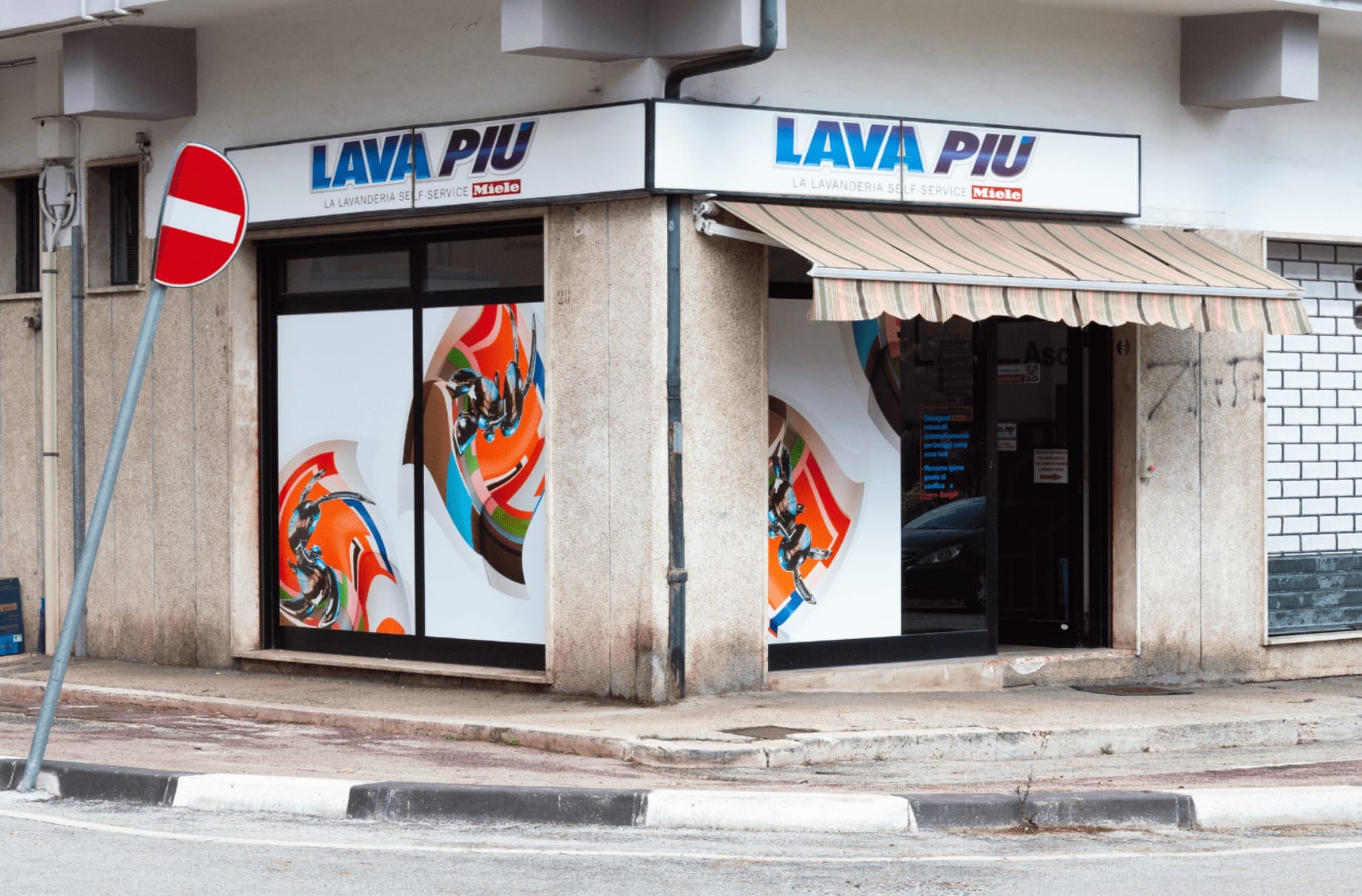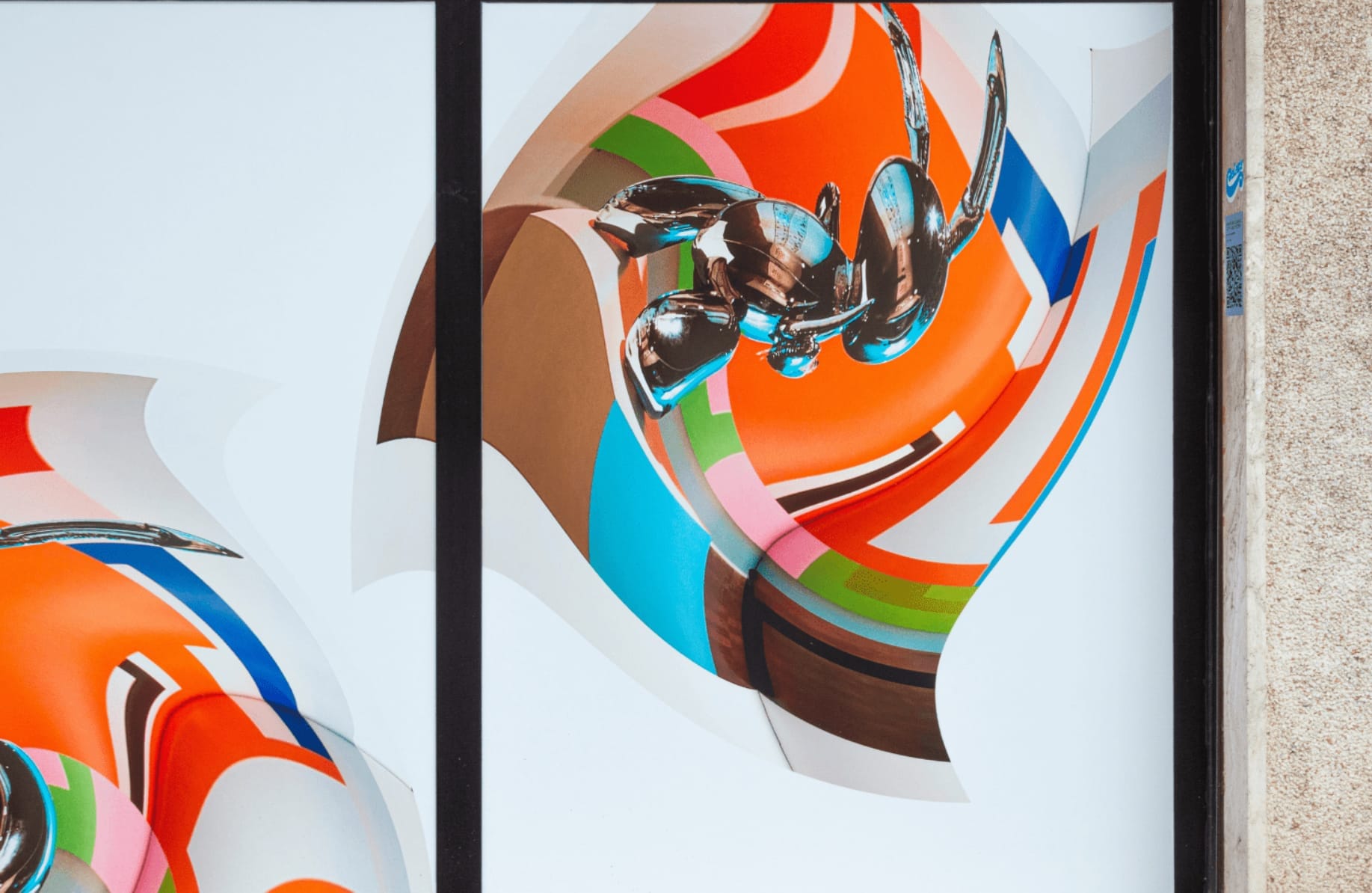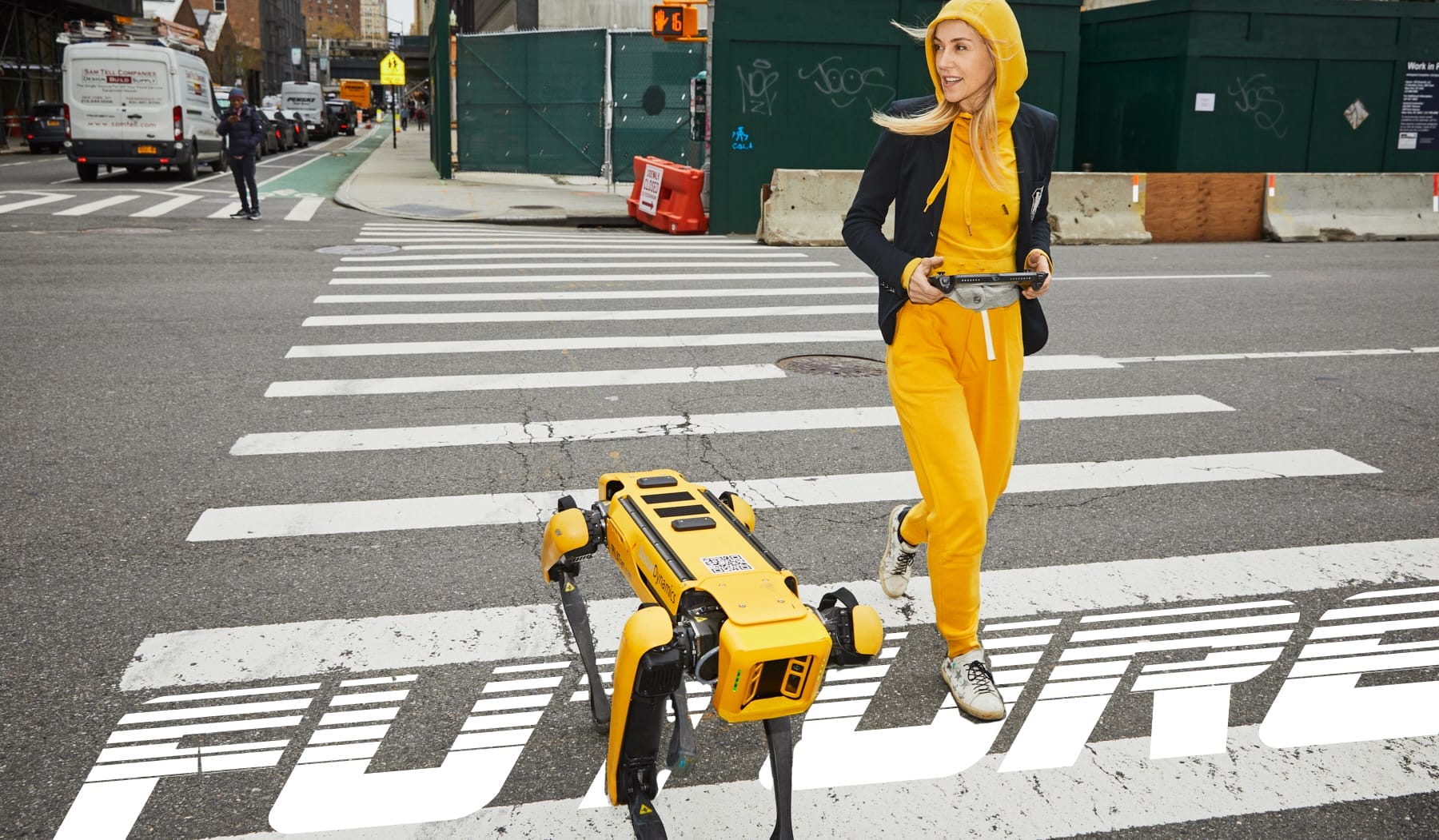
Jonathan Monk’s Spin Cycle in ‘Washing Louise, Jeff and Peter’
Jonathan Monk’s exhibition, “Washing Louise, Jeff and Peter” at the LAVAPIU Laundromat in Teramo, presents a unique interplay between familiar and distorted forms. This site-specific installation by the British artist concludes LAVAPIU’s third exhibition season, titled “La Cura.”
The atmosphere of the LAVAPIU Laundromat is certainly unusual for an art gallery, adding a level of everyday life that starkly contrasts with the conceptual art on display. The exhibition space, a working laundromat in the Gammarana district, offers an intriguing backdrop where art and life blend seamlessly. Monk’s works are prominently displayed against the white exterior walls of the venue, transforming the space into a conceptual dialogue between the artworks and their surroundings.

Monk’s pieces for this show involve digital manipulation and installation. The centerpiece features a series of square images echoing Louise Lawler’s “adjusted to fit” series. These images, depicting Jeff Koons’ mirrored bunny sculpture in front of a Peter Halley painting, are distorted by a centrifugal vortex effect, akin to the movement of a washing machine drum. This visual distortion is both playful and provocative, challenging the sanctity of artworks and a certain light-hearted idea of two-dimensional graphics.
The choice to exhibit in an automatic laundromat is no coincidence but rather enriches the meaning of Monk’s work. LAVAPIU, with its everyday function as a washing space, becomes a place of care and regeneration, symbolically washing away not only dirt but also the rigidities of artistic conventions. Here, art is “washed” and reinterpreted, a process reflecting Monk’s approach to art-making: a continuous rethinking and reworking of the existing.
Louise Lawler, Jeff Koons, and Peter Halley are not just prominent names in American neo-conceptual art but also embody different philosophies and approaches to art. Lawler is known for her photographs that explore the context of artworks, questioning their presentation and perception. Koons, with his iconic bunnies, plays with pop culture and the concept of kitsch, while Halley, through his geometric paintings, delves into themes of technology and urbanization. In Monk’s work, these elements are centrifuged, creating an amalgam that retains their individual characteristics but transforms them into something new and dynamic.
Where Monk previously focused more on the reproduction and direct reinterpretation of other artists’ works, in “Washing Louise, Jeff and Peter,” he creates a more complex and layered dialogue. The digital manipulation of the images is not just a homage to the techniques of his predecessors but also a statement of his own artistic vision, capable of embracing both past and present in an ironic and poetic synthesis.
The choice of a place like LAVAPIU underscores Monk’s desire to bring art closer to the public, breaking down the barriers between conceptual art and everyday life. This democratization of art, which can be experienced in a common space like a laundromat, makes the aesthetic experience accessible to everyone, inviting viewers to reflect on how art can be an integral part of daily life. The distorted images, moved by the washing machine drum, evoke a sense of continuous movement and transformation, a perpetual cycle of creation and reinterpretation, a true mix.
In “Washing Louise, Jeff and Peter,” Jonathan Monk successfully blends nostalgia, innovation, and critique into a work that not only engages with the past of conceptual art but also revitalizes it through a modern and everyday context.

Monk’s ability to continually renew his artistic language while maintaining conceptual coherence and depth of meaning is undeniable. “Washing Louise, Jeff and Peter” serves as an invitation to explore the infinite nuances of perception and interpretation, a process of re-creating form through which art becomes a vehicle for mystery and continuous discovery.

fakewhale
Founded in 2021, Fakewhale advocates the digital art market's evolution. Viewing NFT technology as a container for art, and leveraging the expansive scope of digital culture, Fakewhale strives to shape a new ecosystem in which art and technology become the starting point, rather than the final destination.
You may also like
Sondra Perry: Exploring Digital Realities
Sondra Perry, born in 1986 in New Jersey, is an important figure in the landscape of experimental co
Fakewhale Solo Series Presents Crikey! by Iñigo Bilbao
On Wednesday, July 24th, Fakewhale proudly presents “Crikey!”, a Fakewhale Solo Series release b
Agnieszka Pilat in Conversation with Fakewhale
Agnieszka Pilat is transforming the landscape of digital and robotic art with her innovative approac




